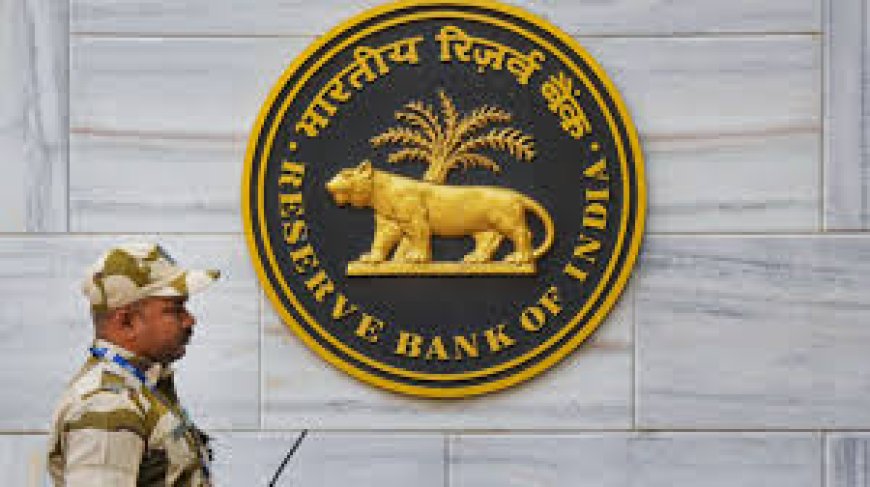RBI removes Rs 84,975 crore via 7-day VRRR auction
The Reserve Bank of India drained ₹84,975 crore via a 7-day VRRR auction to manage excess liquidity in the banking system. Analysts view the move as a calibrated effort to anchor short-term rates.

RBI Tightens Liquidity With ₹84,975 Crore VRRR Auction
In a bid to tighten the surplus liquidity sloshing in the banking system, the Reserve Bank of India (RBI) conducted a 7-day Variable Rate Reverse Repo (VRRR) auction on Wednesday, successfully absorbing ₹84,975 crore. The central bank’s proactive move comes at a time when money markets are grappling with excess cash, keeping short-term interest rates under pressure.
According to the RBI’s release, the VRRR auction attracted a robust response from banks and financial institutions, reflecting the central bank’s grip over short-term liquidity management. The cut-off yield for the auction stood at 6.50%, aligning with the prevailing repo rate.
Surplus Liquidity Triggers Central Bank Intervention
The financial system has been witnessing a sustained surplus in liquidity, driven by robust government spending and the return of ₹2,000 currency notes to the banking system after the withdrawal announcement last year. Analysts estimate that daily net liquidity under the liquidity adjustment facility (LAF) has been in the positive territory for several days, often exceeding ₹1 lakh crore.
“Liquidity has been running high, with the RBI’s absorption via VRRR helping anchor short-term money market rates. This ensures the call money rate does not drift too far below the repo rate,” said Suman Chowdhury, Chief Economist at Acuité Ratings & Research.
Why VRRR? Understanding RBI's Policy Tool
The Variable Rate Reverse Repo (VRRR) is one of the primary tools the RBI uses to manage liquidity in the system. Unlike fixed-rate reverse repos, VRRR allows banks to park surplus funds with the RBI at a rate determined by auction. This flexible mechanism helps the central bank manage money market volatility and inflation expectations.
“The VRRR auction reflects the central bank’s nuanced approach to temporary liquidity surplus, without altering the broader monetary policy stance,” said Kaushik Das, Chief Economist for India at Deutsche Bank.
Market Reaction: Short-Term Yields Stay Anchored
The bond markets responded in a measured manner, with yields on short-term treasury bills and commercial paper staying steady. The 3-month T-bill yield hovered around 6.82%, while the interbank call money rate held near 6.55%, comfortably within the LAF corridor.
“By draining liquidity without hiking rates, the RBI is sending a subtle signal to markets that it is vigilant but not alarmed,” noted Madhavi Arora, Lead Economist at Emkay Global Financial Services.
Policy Context: Balancing Inflation and Growth
The move comes amid growing confidence that retail inflation, though elevated, remains within the central bank’s comfort zone. Headline Consumer Price Index (CPI) inflation eased to 4.75% in May, while core inflation (excluding food and fuel) continues to decelerate.
RBI Governor Shaktikanta Das had previously underlined the importance of maintaining a disinflationary stance while supporting the nascent recovery in private investment and consumption. The central bank’s liquidity operations, including VRRR, are part of this broader macroeconomic calibration.
Banking Sector Impact: A Short-Term Squeeze
For commercial banks, the VRRR operation implies a temporary tightening of funds, potentially pushing them to mobilize more deposits or trim excess investments. However, given the short tenure of the auction, the impact on lending operations is expected to be marginal.
“Banks are unlikely to feel a significant crunch, but they will need to stay nimble in liquidity management, especially with credit growth expected to pick up in the second half of FY25,” said Rajeev Ahuja, Executive Director at RBL Bank.
Investor Outlook: Watching RBI’s Next Moves
From an investor perspective, the RBI’s VRRR action signals its intent to stay ahead of the curve on inflation without rattling financial markets. For equity investors, the move reaffirms stability in interest rates in the near term, supporting continued participation in rate-sensitive sectors like banking, auto, and real estate.
Debt market participants are also likely to view the liquidity absorption as a sign of policy continuity, with the central bank unlikely to cut rates anytime soon but also cautious about overtightening.
“Liquidity normalization is a healthy sign, especially if it occurs in a calibrated and transparent manner, which the RBI has been doing,” said Arvind Chari, CIO at Quantum Advisors.
RBI Walks the Tightrope with Precision
The successful execution of the ₹84,975 crore 7-day VRRR auction underscores the RBI’s proactive stance in managing liquidity amid dynamic macroeconomic conditions. With inflation moderating, growth stabilizing, and global central banks adopting a cautious approach, the RBI’s liquidity strategy will remain a key market-watching theme in the coming quarters.
Investors, analysts, and policymakers will keep a close eye on upcoming liquidity operations, the evolving inflation trajectory, and global cues to gauge the central bank’s next move.
What's Your Reaction?
 Like
0
Like
0
 Dislike
0
Dislike
0
 Love
0
Love
0
 Funny
0
Funny
0
 Angry
0
Angry
0
 Sad
0
Sad
0
 Wow
0
Wow
0












































































